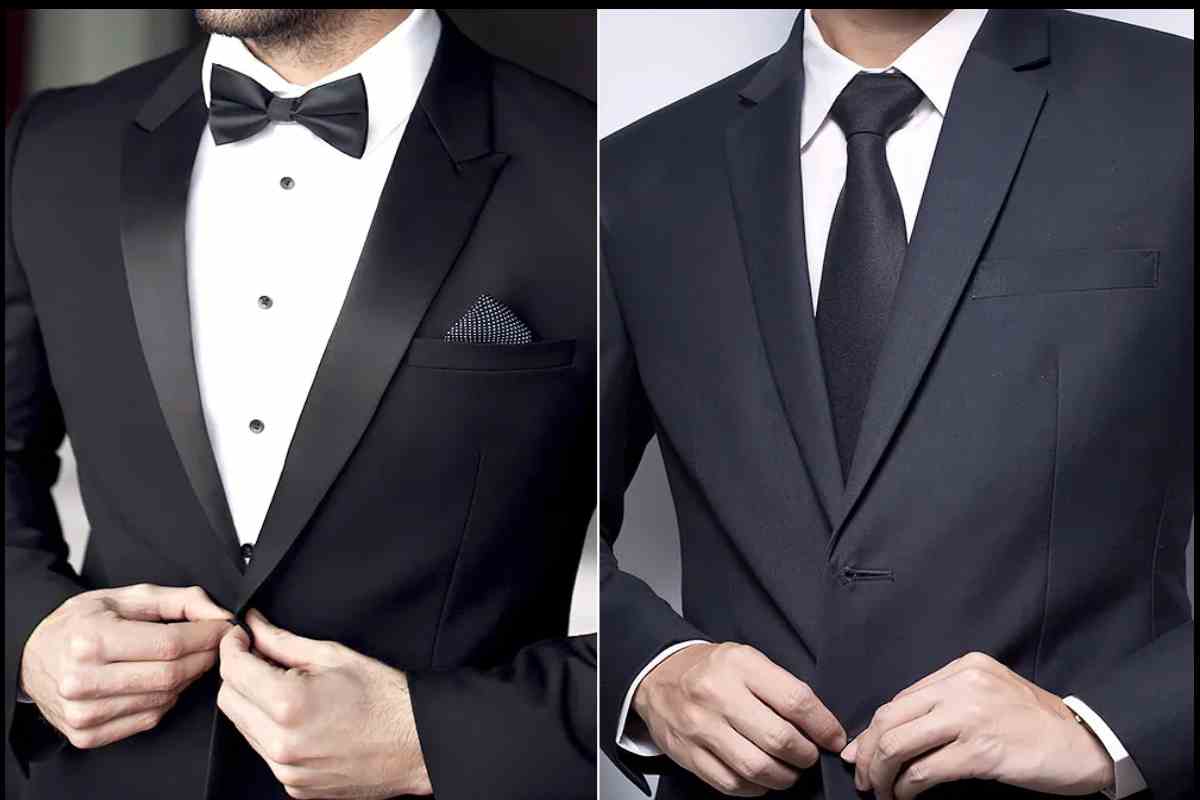What Makes Up a Tuxedo
A tuxedo is just a fancy jacket and matching fine attire slacks with shiny shoes, right? Not quite. There’s a lot more to a tuxedo than just those two pieces. In fact, once people realize how many parts there are to consider, some required and some not, it opens the eyes a bit to what’s possible and how it will look. Knowing these parts can also make the difference in a real standout with a tuxedo and looking awkward or out of place.
Table of Contents
The Jacket
Yes, the jacket is probably the most obvious part. It is a necessity and addresses the upper body appearance. The jacket should frame the body and give it a flattering look versus looking tight, like a stuffed sausage. Remember, unlike a business suit, a tuxedo jacket is generally worn closed when standing up. So, you want to choose wisely for fit as well as look. Jackets come with large lapels or small, and single or double-breasted buttons. The style can change one’s appearance quite a bit. However, the goal is to fit in at the event, not look garish or weird. So, choose a jacket wisely as it’s the most visible part of the tuxedo.
In particular, the jacket lapel serves more than just adding to the look; it’s also where the floral accent can be pinned. You should have enough room on the label to comfortably wear such an accent if needed for the event. Alternatively, evening events tend to steer towards tuxedos with peak lapels, less jagged but still can wear a floral accent.
The Bow Tie
Most tuxedos are worn with a bow tie, not a regular business tie. There are exceptions, such as the old-fashioned stroller tuxedo. However, even that tie is a specific style for that tuxedo. The bow tie requires a special method of tying it on, so practice is worth the trouble. There are clip-on versions, but a properly set bow tie looks better. This draws attention to the face and frames the top of the chest and neck. The bow tie is also where a bit of creativity with color and pattern is allowed, but don’t get carried away. “Black tie” does literally mean the event is black tie.
Cufflinks for the Wrists
Definitely not required but, if you are wearing an actual tuxedo shirt, you will need some kind of wrist attachment to close the sleeve. These are classy and are, in effect, a bit of jewelry to spice up the tuxedo. They are actually the most seen part of a tuxedo when the hands are used, and the style is noticed.
The Cummerbund
Meant to hide the belly on overweight types, the cummerbund has become a nice standard for the formal tuxedo regardless of shape today. The color is matched to the bow tie, and it covers suspender connectors to the waist.
Suspenders
Without a belt, there needs to be some way to keep one’s pants on during an event; suspenders provides the proper lift and stay hidden under the jacket.
The Pocket Square
This is a required accent piece that represents a handkerchief tucked in the left upper external pocket of the tuxedo. Today it’s just a folded decorative fabric, but in earlier decades it was actually useful. It also doubled as a tear relief for a partner or a quick napkin when nothing else was around.
Whether using rentable tuxedos or owning one, you want to be sure you know all the different parts of a tuxedo well. Doing so, you’ll have an easier time picking what works as well as how to wear it properly.

